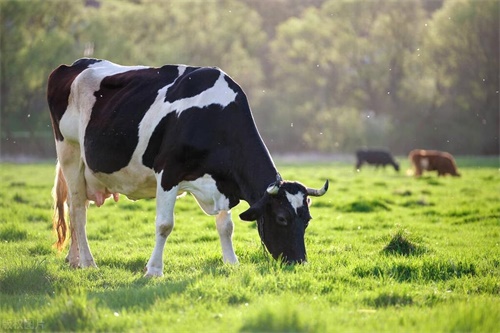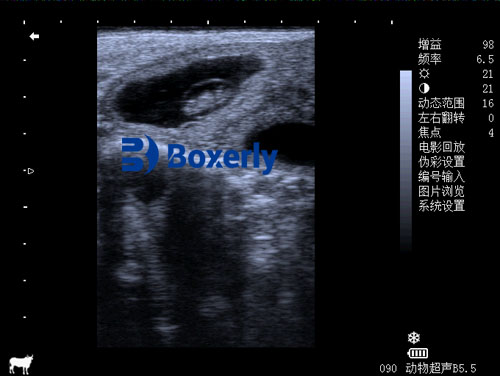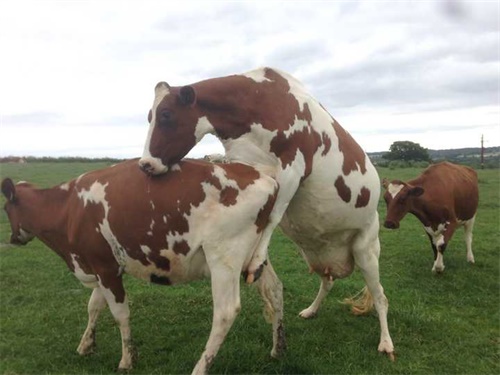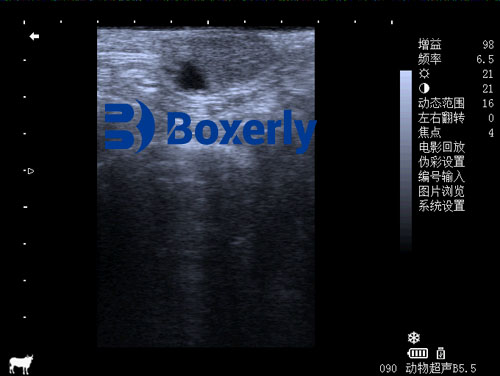Ultrasound Role in Dairy Cattle Breeding and Mating
In modern dairy farming, maximizing reproductive efficiency is critical for sustaining milk production and herd profitability. Selection of genetically superior animals and their optimal pairing are foundational aspects of cattle reproduction. In recent years, veterinary ultrasonography—particularly real-time B-mode ultrasound—has become a transformative tool for managing breeding programs. It provides a non-invasive, accurate, and timely evaluation of reproductive health, which helps farmers make better decisions about selection, mating, and early diagnosis of infertility or pregnancy failure.

In this article, we’ll explore how ultrasound is reshaping dairy cattle selection and mating processes. Drawing from both international research and real-world farming practices, we’ll demonstrate how this technology improves genetic progress, herd health, and productivity.
Selection: Identifying Superior Breeding Stock
Selection involves choosing bulls and cows with desirable traits to pass onto the next generation. Traditionally, selection was based on visual assessment and production records such as milk yield, body conformation, and fertility history. However, with the advent of ultrasound imaging, farmers and veterinarians can now directly examine internal reproductive organs and monitor physiological readiness for reproduction.
For example, using ultrasound, we can evaluate the size and structure of the ovaries, detect the presence of functional corpora lutea (CLs), and assess follicular development. Cows with well-developed reproductive systems and normal cyclicity are more likely to conceive quickly, which makes them preferable as breeding stock.
In the United States and Europe, many breeding companies and progressive dairy farms routinely incorporate ultrasound scans before including animals in their breeding programs. Ultrasound can reveal hidden reproductive pathologies—such as cystic ovaries, uterine infections, or silent heats—that might otherwise go unnoticed until costly breeding failures occur.
Mating: Pairing for Optimal Genetic Outcomes
Selection alone does not guarantee high-performing offspring; proper mating strategy is equally important. Even an excellent bull cannot compensate for poor pairing. This is where ultrasound contributes again, as it provides the breeder with crucial information to determine whether a cow is in estrus, whether ovulation has occurred, or if she is carrying a persistent CL that may interfere with conception.
Using this reproductive information, breeders can synchronize estrus cycles across multiple cows, increasing breeding efficiency through timed artificial insemination (AI). AI is now a global standard in dairy farming, and ultrasound is the most reliable way to monitor ovulation timing and uterine condition to improve AI success.

Principles of Mating Selection
When planning matings, several core principles are followed internationally:
-
Match similar superior traits: Pairing bulls and cows with similar strengths (e.g., high milk yield, strong udders) enhances those traits in the offspring.
-
Avoid doubling negative traits: Mating animals that share the same weakness—like poor leg conformation—can amplify the problem in future generations.
-
Avoid inbreeding: Excessive genetic similarity reduces fertility and health in offspring, a concern especially relevant in closed herd systems.
-
Bulls should be better than cows: Generally, bulls used for AI should have higher overall evaluation scores than the cows they inseminate.
-
Consider age compatibility: Young cows are typically mated with mature bulls to ensure easier calving and improve conception rates, while older cows can benefit from youthful genetic vigor.
International research, such as from the University of Guelph in Canada or Wageningen University in the Netherlands, supports these strategies and emphasizes the role of ultrasound in optimizing these decisions. Veterinary ultrasonography enables breeders to not only time insemination accurately but also to follow up with pregnancy diagnosis and fetal monitoring.
Infertility Detection and Management
One of the greatest advantages of ultrasound in reproductive management is its ability to detect reproductive disorders early. Subfertility and infertility are common in dairy cows, often due to uterine infections, retained placenta, ovarian cysts, or anatomical abnormalities. Many of these can be asymptomatic and only discovered after several failed inseminations.
Ultrasound allows timely detection of these conditions and guides therapeutic interventions. For example, a uterine infection can be diagnosed by detecting fluid or debris in the uterus and subsequently treated with antibiotics. An ovarian cyst can be classified as luteal or follicular and treated accordingly with hormone therapy.
On farms in countries such as Australia and New Zealand, routine ultrasound checkups are now considered a best practice. Many progressive farms schedule biweekly or monthly reproductive checks to monitor the status of all cows in breeding programs.
Pregnancy Detection and Record Keeping
Another vital application of ultrasound is early pregnancy diagnosis. By day 28 post-insemination, skilled veterinarians can detect embryonic development and confirm pregnancy. This is much earlier than traditional rectal palpation, which is typically performed around day 45 or later.
Early detection enables better management of non-pregnant cows. They can be re-inseminated promptly, reducing the number of open days and improving overall herd fertility. Moreover, ultrasound can assess fetal viability, detect twins, and monitor placental development—factors that are critical in modern herd management.
Maintaining detailed breeding records is another pillar of successful dairy herd improvement. Most advanced farms utilize digital software that records:
-
Bull and cow pedigree and traits
-
Insemination dates and success rates
-
Estrus cycle observations
-
Pregnancy confirmations
-
Health issues and treatments
-
Calving outcomes
This data is often linked with national dairy databases to enhance genetic evaluations and breeding strategies across the industry. In countries like the United States, Canada, and Germany, such record systems are crucial components of dairy herd improvement programs (DHIP).

Why Veterinary Ultrasound is Indispensable
Veterinary ultrasound has become a cornerstone of modern dairy reproduction because of its unique advantages:
-
Non-invasive and safe: It does not harm the cow or fetus and can be used repeatedly without risk.
-
Real-time imaging: The vet can instantly view and interpret ovarian and uterine structures.
-
Highly accurate: Better than rectal palpation in detecting early pregnancies or diagnosing cysts.
-
Cost-effective: Reduces wasted breeding attempts and lowers economic losses from infertility.
-
Time-efficient: Enables precise breeding schedules and optimal insemination timing.
Global adoption of ultrasound in breeding programs has been increasing steadily, especially in regions with high-tech farming practices such as North America, Western Europe, and parts of Asia.
Conclusion
Veterinary ultrasound is revolutionizing how dairy cattle are selected and bred. It allows farmers to base breeding decisions on real-time reproductive data rather than guesswork, thereby improving genetic progress, fertility rates, and overall herd health. By integrating ultrasonography into the daily routine—especially when combined with digital record keeping and AI—dairy producers can build more productive, resilient, and profitable herds.
As awareness and affordability grow, more farms around the world are expected to embrace this technology. The future of dairy breeding will be data-driven, and veterinary ultrasound is at the heart of this transformation.





